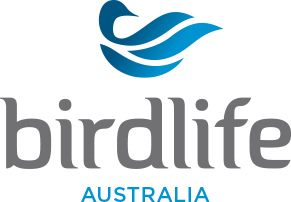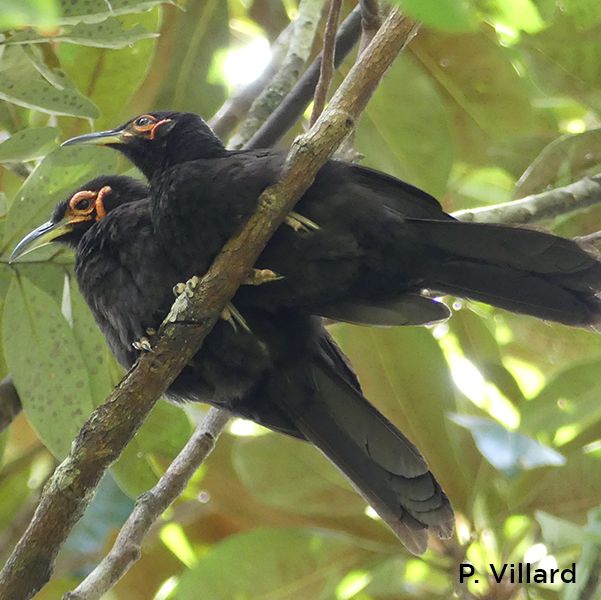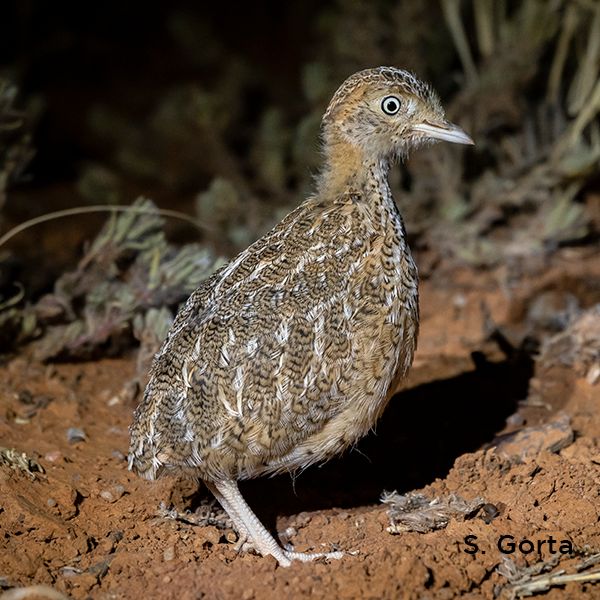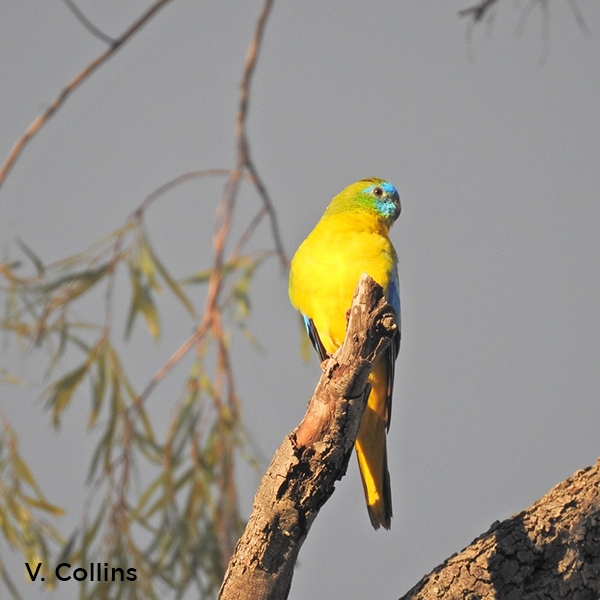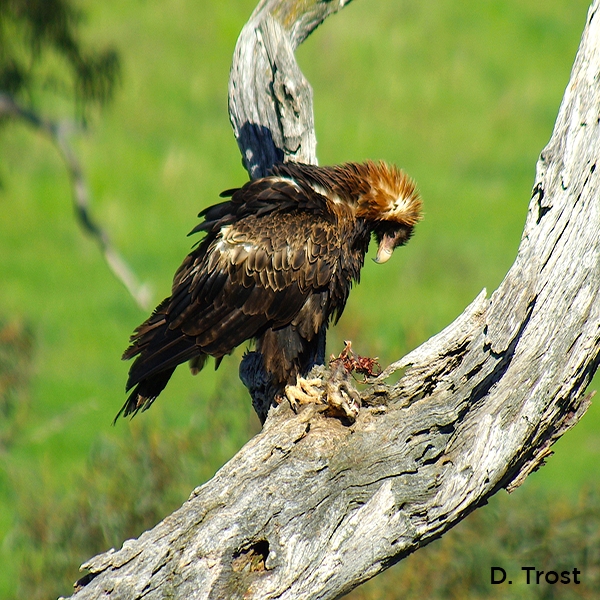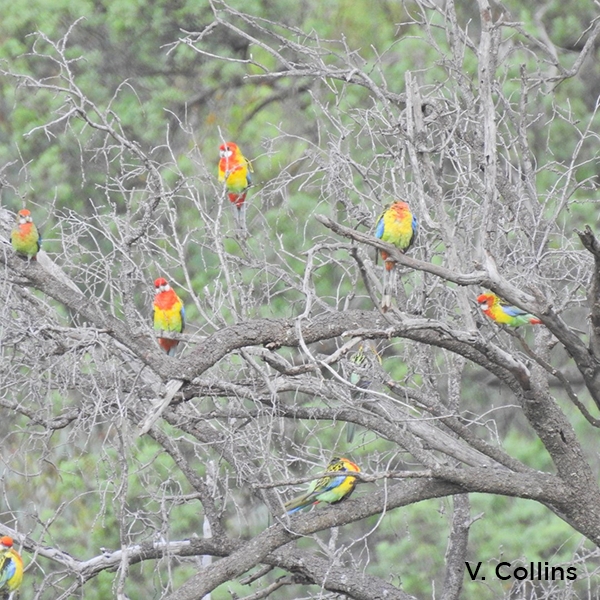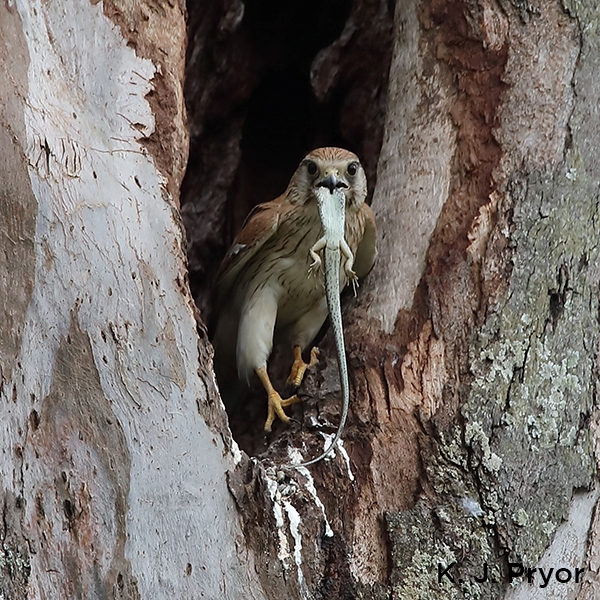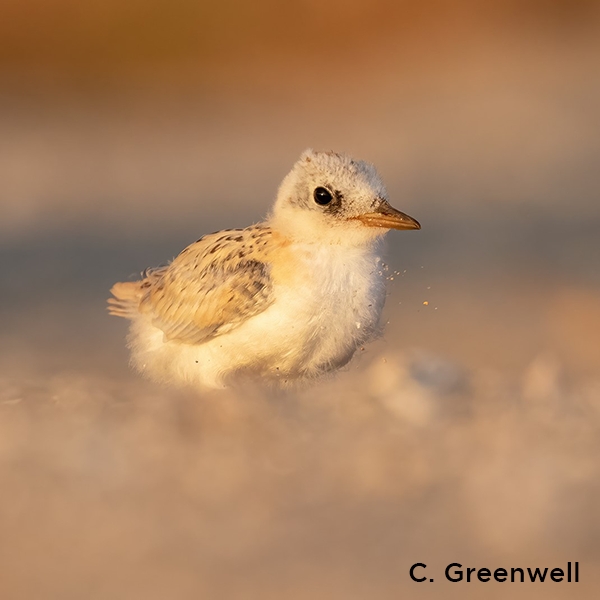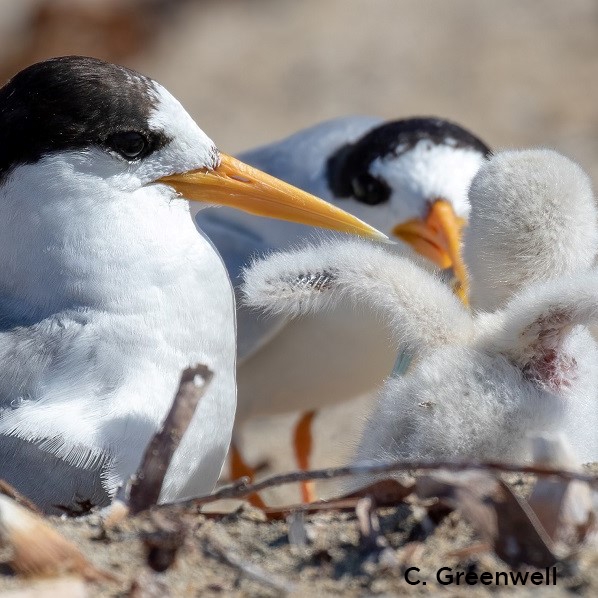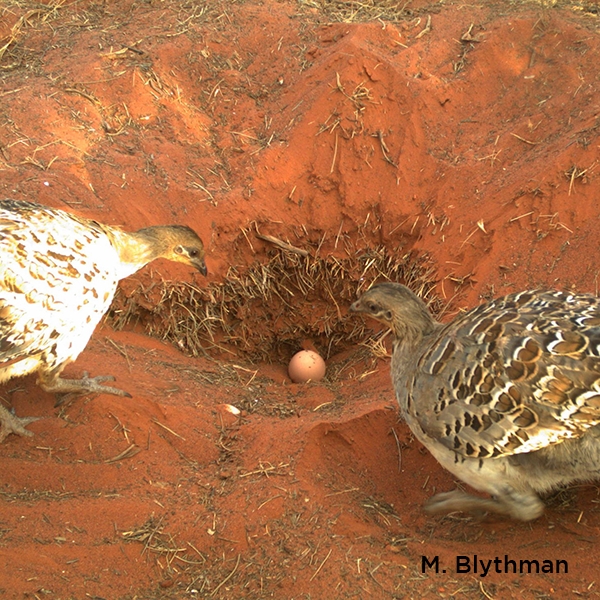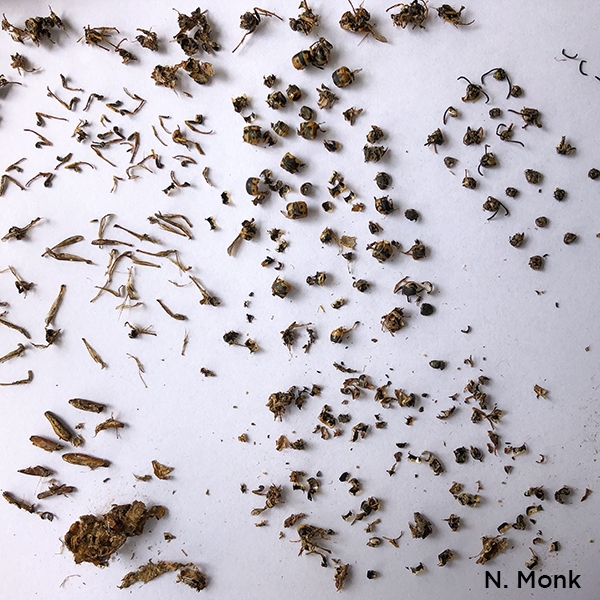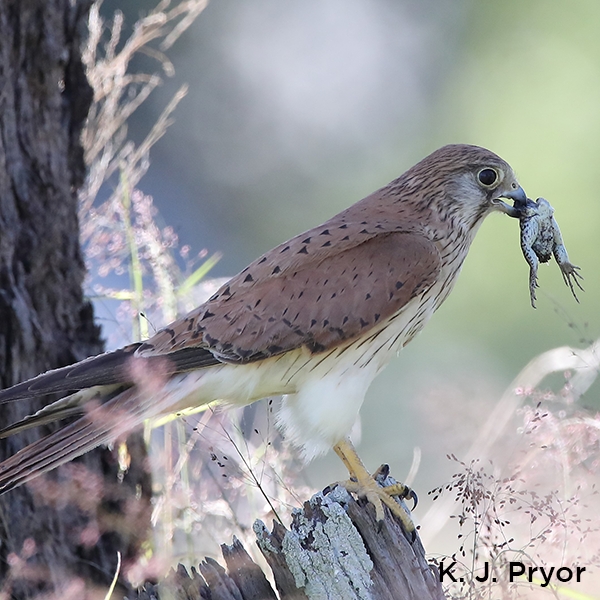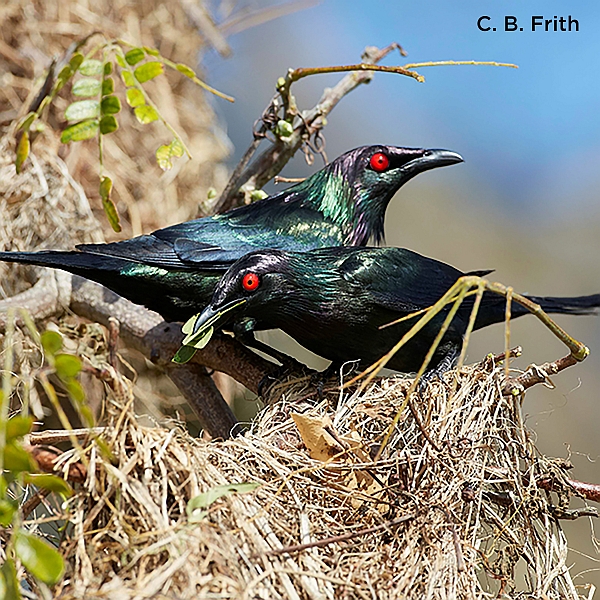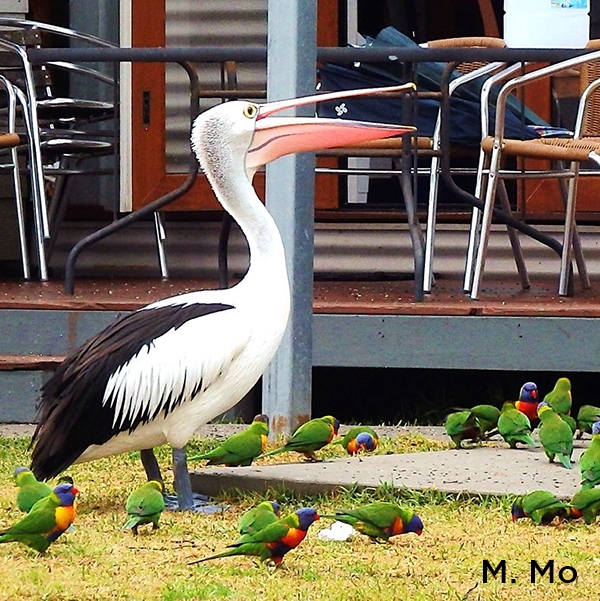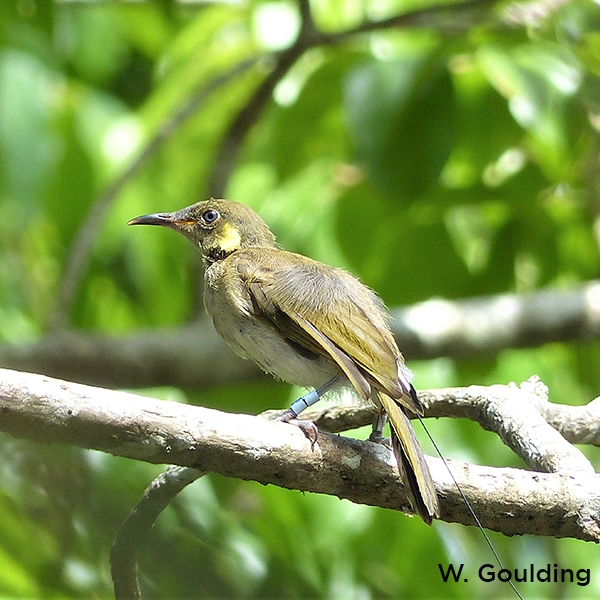A recent specimen of a Tasmanian Boobook Ninox leucopsis recovered on Lord Howe Island
Leah R. Tsang, Nicholas Carlile, Terry O'Dwyer, Mark D.B. Eldridge, Greta J. Frankham, Hank Bower
Abstract
References
APVMA (2018). Permit to allow minor use and supply of an AGVET chemical for control of the black rat (Rattus rattus) and house mouse (Mus musculus) on Lord Howe Island. Permit number - PER85459. Permit issued by Australian Pest and Veterinary Medicine Authority to Lord Howe Island Board, 24 August 2018.
Benns, M. (2019). Rats! We killed a dead animal: Island in flap as rodent poison slays an 'extinct' owl. Daily Telegraph (Sydney), 7 September 2019, 15.
BirdLife Australia (2019). The BirdLife Australia Working List of Australian Birds, Version 3. Available online: https://birdlife.org.au/documents/BWL-BirdLife_Australia_Working_List_v3.xlsx
Christidis, L. & Boles, W.E. (2008). Systematics and Taxonomy of the Birds of Australia. CSIRO Publishing, Melbourne.
del Hoyo, J., Collar, N.J., Christie, D.A., Elliott, A. & Fishpool, L.D.C. (2014). HBW and BirdLife International Illustrated Checklist of the Birds of the World. Lynx Editions, BirdLife International. Barcelona, Spain.
Dickinson, E.C., Remsen, J.V. & Christidis, L. (2013). The Howard and Moore Complete Checklist of the Birds of the World, Volumes 1 and 2: Non-passerines and Passerines. Aves Press, Eastbourne, UK.
DoEE (2017). Approval - Lord Howe Island Rodent Eradication Project, NSW (EPBC 2016/7703). Issued to Lord Howe Island Board by Department of Environment & Energy, 18 August 2017.
Fridolfsson, A.K. & Ellegren, H. (1999). A simple and universal method for molecular sexing of non-ratite birds. Journal of Avian Biology 30, 116-121.
Frith, C.B. (2013). The Woodhen. A Flightless Island Bird Defying Extinction. CSIRO Publishing, Melbourne.
Garnett, S., Olsen, P., Butchart, S. & Hoffmann, A. (2011). Did hybridization save the Norfolk Island boobook owl Ninox novaeseelandiae undulata? Oryx 45, 500-504.
Gwee, C.Y., Christidis, L., Eaton, J.A., Norman, J.A., Trainor, C.R., Verbelen, P.R. & Rheindt, F.E. (2017). Bioacoustic and multi-locus DNA data of Ninox owls support high incidence of extinction and recolonisation on small, low-lying islands across Wallacea. Molecular Phylogenetics and Evolution 109, 246-258.
Harper, G.A., Pahor, S. & Birch, D. (2020). The Lord Howe Island rodent eradication: Lessons learnt from an inhabited island. In: Woods, D.M. (Ed.). Proceedings, 29th Vertebrate Pest Conference. University of California, California, USA.
Higgins, P.J. (Ed.) (1999). Handbook of Australian, New Zealand & Antarctic Birds, Volume 4: Parrots to Dollarbird. Oxford University Press, Melbourne.
Hindwood, K.A. (1940). The birds of Lord Howe Island. Emu 40, 1-86.
Hogan, F.E., Campbell, C., Harrison, K.A., Milledge, D. & Cooke, R. (2013). Molecular data contradicts historical records and cautions translocation of the Lord Howe Island masked owl. Biological Conservation 159, 313-320.
Hutton, I. (1991). Birds of Lord Howe Island Past and Present. Author, Coffs Harbour, NSW.
Hyde, N.H.S., Matthews, K., Thompson, M. & Gale, R. (2009). First records of Barn Owls (Tyto alba) breeding in the wild in New Zealand. Notornis 56, 169-175.
Kocher, T.D., Thomas, W.K., Meyer, A., Edwards, S.V., Pääbo, S., Villablanca, F.X & Wilson, A.C. (1989). Dynamics of mitochondrial DNA evolution in animals: Amplification and sequencing with conserved primers. Proceedings of the National Academy of Sciences of the United States of America 86, 6196-6200.
LHIB (2009). Draft Lord Howe Island Rodent Eradication Plan. Lord Howe Island Board, Lord Howe Island, NSW.
McAllan, I.A.W., Curtis, B.R., Hutton, I. & Cooper, R.M. (2004). The birds of the Lord Howe Island Group: A review of records. Australian Field Ornithology 21 (Suppl.), 1-82.
McNabb, E.G. (2002). Notes on the diet and observations of the Southern Boobook (Ninox novaeseelandiae) in southern Victoria. In: Newton, I., Kavanagh, R., Olsen, J. & Taylor, I. (Eds). Ecology and Conservation of Owls, pp. 192-198. CSIRO Publishing, Melbourne.
Mathews, G.M. (1928). The Birds of Norfolk and Lord Howe Islands. Witherby, London.
Mees, G.F. (1964). A revision of the Australian owls (Strigidae and Tytonidae). Zoologische Verhandelingen 65, 1-62.
Milledge, D., Bower, H. & Carlile, N. (2018). Removing a threatened apex predator from an oceanic World Heritage island: The Masked Owls of Lord Howe Island. Australian Zoologist 40, 75-91.
Mooney, N. (2013). Tasmanian raptors migrating or not. Boobook 31, 6.
Murray, M. (2018). Ante-mortem and post-mortem signs of anticoagulant rodenticide toxicosis in birds of prey. In: van den Brink, N., Elliott, J., Shore, R. & Rattner, B. (Eds). Anticoagulant Rodenticides and Wildlife. Emerging Topics in Ecotoxicology (Principles, Approaches and Perspectives), pp. 109-134. Springer, Cham, Switzerland.
Neaves, L.E., Danks, M., Lott, M.J., Dennison, S., Frankham, G.J., King, A., Eldridge, M.D.B., Johnson, R.N. & Divljan, A. (2018). Unmasking the complexity of species identification in Australasian flying-foxes. PLoS One 13, e0194908.
Nei, M. & Kumar, S. (2000). Molecular Evolution and Phylogenetics. Oxford University Press, New York.
Norman, J.A., Olsen, P.D. & Christidis, L. (1998). Molecular genetics confirms taxonomic affinities of the endangered Norfolk Island Boobook Ninox novaeseelandiae undulata. Biological Conservation 86, 33-36.
Olsen, J. & Debus, S.J.S. (2013). Do Tasmanian Southern Boobooks migrate? Australian Field Ornithology 30, 106-108.
Olsen, P.D. (1996). Re-establishment of an endangered subspecies: The Norfolk Island Boobook Owl Ninox novaeseelandiae undulata. Bird Conservation International 6, 63-80.
Rambaut, A., Drummond, A.J., Xie, D., Baele, G. & Suchard, M.A. (2018). Posterior summarization in Bayesian phylogenetics using Tracer 1.7. Systematic Biology 67, 901-904.
Ramsay, E.P. (1888). Tabular List of all the Australian Birds at Present Known to the Author, Showing the Distribution of the Species over the Continent of Australia and Adjacent Islands. Author, Sydney.
Ronquist, F., Teslenko, M., Van Der Mark, P., Ayres, D.L., Darling, A., Höhna, S., Larget, B., Liu, L., Suchard, M.A. & Huelsenbeck, J.P. (2012). MrBayes 3.2: Efficient Bayesian phylogenetic inference and model choice across a large model space. Systematic Biology 61, 539-542.
Sarker, S., Shubhagata, D., Forwood, J., Helbig, K. & Raidal, S.R. (2016). The complete mitochondrial genome sequence of an Endangered powerful owl (Ninox strenua). Mitochondrial DNA Part B 1, 722-723.
Schindel, D.E., Stoeckle, M.Y., Milensky, C., Trizna, M.,
Schmidt, B., Gebhard, C. & Graves, G. (2011). Project description: DNA barcodes of bird species in the National Museum of Natural History, Smithsonian Institution, USA. ZooKeys 152, 87.
Schodde, R. & Mason I.J. (1997). Aves (Columbidae to Coraciidae). In: Houston, W.W.K & Wells, A. (Eds). Zoological Catalogue of Australia, Vol. 37.2. CSIRO Publishing, Melbourne.
Tamura, K., Stecher, G., Peterson, D., Filipski, A. & Kumar, S. (2013). MEGA6: Molecular Evolutionary Genetics Analysis version 6.0. Molecular Biology and Evolution 30, 2725-2729.
Tizard, J., Patel S., Waugh, J., Tavares, E., Bergmann, T., Gill, B., Norman, J.,Christidis, L., Scofield, P., Haddrath, O., Baker, A., Lambert, D. & Millar, C. (2019). DNA barcoding a unique avifauna: An important tool for evolution, systematics and conservation. BMC Evolutionary Biology 19, 1-13.
Trost, S., Olsen, J., Rose, A.B. & Debus, S.J.S. (2008). Winter diet of Southern Boobooks Ninox novaeseelandiae in Canberra 1997-2005. Corella 32, 66-70.
Walsh, A., Wilson, A., Bower, H., McClelland, P. & Pearson, J. (2019). Winning the hearts and minds – proceeding to implementation of the Lord Howe Island rodent eradication project: A case study. In: Veitch, C.R., Clout, M.N., Martin, A.R., Russell, J.C. & West, C.J. (Eds). Island Invasives: Scaling up to Meet the Challenge, pp. 522-530. IUCN Species Survival Commission, Dundee, Scotland.
Williams, M. (2017). From field to museum tray: Shrinking of the Mallard Anas platyrhynchos. Wildfowl 67, 123-129.
Wilson, R.E. & McCracken, K.G. (2008). Specimen shrinkage in Cinnamon Teal. Wilson Journal of Ornithology 120, 390-392.
Winker, K. (1993). Specimen shrinkage in Tennessee Warblers and "Traill's" Flycatchers. Journal of Field Ornithology 64, 331-336.
